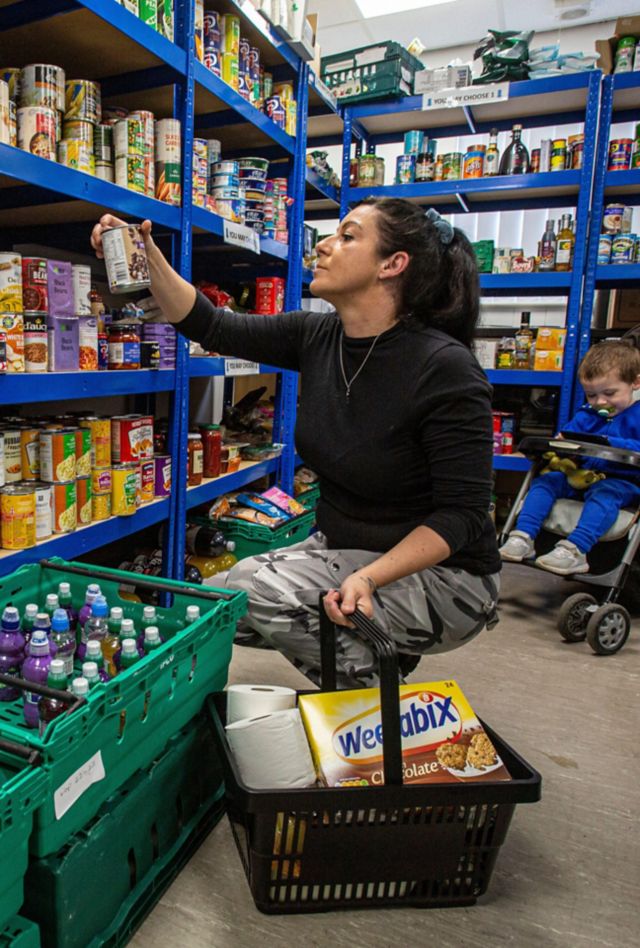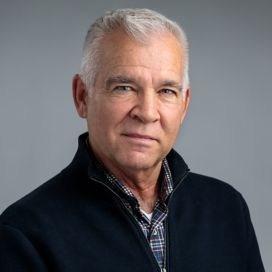Feeding America’s Child & Family Choice Program

Problem
Is offering food choice better than giving food pantry clients pre-packaged boxes?
Offering food pantry clients (also called “neighbors”) some choice when selecting products for themselves and their families—as opposed to offering the same pre-packed bags of food to everyone—is increasingly considered a best practice among food pantries and food banks. Yet little evidence exists on the challenges that pantries might face when implementing choice and the positive impacts choice can have on pantry operations and the clients they serve. Without such evidence, there is no clear road map or motivation for food pantries to shift from a more traditional model of food distribution to one that offers a more grocery store-like shopping experience.
Solution
NORC helped assess the barriers to and impacts of increasing food choice.
With funding from Morgan Stanley, Feeding America commissioned NORC and More Than Food Consulting to conduct a first-of-its-kind evaluation of the implementation and impact of increasing choice at food banks and their partner pantries across the U.S. The first two years of the evaluation included two different cohorts of food banks and pantries and employed a similar mixed-methods design. This included retrospective (Year 1) and pre/post (Year 2) surveys of and in-depth interviews with food pantry staff, volunteers, and clients.
Key research questions included:
- What barriers do pantries face when implementing choice?
- How can barriers to choice be overcome across pantry types?
- What impacts does choice have on pantry staff, volunteers, and clients?
- How can food choice programs be improved and sustained?
Together, these activities will generate the evidence needed to identify best practices for implementing choice and the positive impacts on pantry clients, staff, and volunteers that might be expected when doing so.
Year 3 of the evaluation uses findings from the first two years to design and evaluate a toolkit for implementing food choice that is being assessed qualitatively through monthly webinars, web surveys, and site visits to make continuous improvements. The goal is to have a validated set of tools and practices at the end of the evaluation that Feeding America will make available to food banks and their partner pantries across the country.
Result
Our assessment found that food choice can improve pantry operations and the client experience.
Year 1 of the evaluation yielded retrospective data on the food pantry experience and showed that, despite the pandemic, pantries of all shapes and sizes were able to offer more food choice. Statistical analysis and interview data also suggests that the barriers to implementing choice are few while the potential benefits are many, including increased staff and client satisfaction and less food waste. Full results are available in the attached reports and in a peer-reviewed journal article titled, “Offering Full Choice in Food Pantries Is Feasible and Improves Pantry Operations.”
Year 2 included pre- and post-surveys of both pantry directors and pantry clients. Cross-sectional analyses consistently found that clients using full choice pantries report significantly more satisfaction with the pantry experience, greater diversity of food offerings, shorter wait times, and less food waste. Preliminary analysis of the pre/post client survey data also shows a statistically significant association between lower levels of food waste and pantries which improved their choice offerings over a 9-month period, a key benefit of choice to both food banks and their partner pantries.
Contact
Related Tags
Project Leads
-
Michael Reynolds
Senior Vice President & DirectorSenior Advisor -
Kevin L. Brown
Vice PresidentProject Director -
Gwendolyn Rugg
Senior Research ScientistProject Manager












